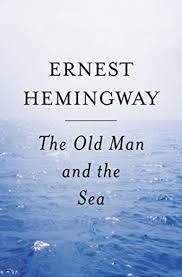Every time I ride I am aware of the sun. Whether the solar orb is low on a bright cold horizon in a Pennsylvania winter or the searing sphere straight up in the in the southern Iraq sky, the sun dominates my riding.
I have been thinking a lot about the sun with the passing of my mother-in-law. Her area of professional study—solar astronomy—helps me to focus my wandering thoughts as I ride alone around Tallil Ali Air Base. As soon as I get away from traffic, I review consciously what my unconscious already knows: it’s 6pm, the sun is in front of me, south is to the left, my shadow points back to the east, the shadow is long so sunset is an hour away, and so forth.
Because the earth orbits the sun on a tilted plane, the sun looks different on every part of the earth in every season. In Pennsylvania, the sun is never straight up in the sky. Even at noon on June 21 (the longest day) the sun is 15 degrees below vertical passing through due east and due west almost two hours after sunrise and two hours before sunset. Also in Pennsylvania and across the northern latitudes, the length of days vary dramatically over the course of a year, from more than 16 hours in mid June to just over eight hours in mid-December. In the north the sun creates long shadows, hundreds of feet long on bright days near dusk and dawn.
In Iraq, just ten degrees of longitude south, the sun looks very different. Here the sun is almost (but not quite) straight up on the sky at noon. But there is an odd respite from the blazing sun at dawn and dusk. In most of the US, the sky is bright (in a clear sky) shortly after it clears the horizon. Here the sun is obscured until it has been up almost an hour and for the last hour of the day. The heat of the day starts an hour after dawn and begins to subside before sundown because the air is so full of dust that the sun almost disappears and becomes just an orange glow an hour before it sets and is hidden for the first hour of the day.
The effect is enhanced further because we are on the eastern end of a wide time zone. The sun rises before 5 am and officially sets by 7 pm. So the sky gets suddenly dimmer at 6pm before dark just after 7pm. Because we trained at Fort Sill, Oklahoma, before coming here, the body clock effect was even greater. Fort Sill is at the western end of a time zone at roughly the same longitude. The day is the same length, but in mid-April as we left Fort Sill, sunrise was after 7 am and sunset was well after 8 pm. When we landed in Kuwait, the day was the same length but started before 5am and ended before 7 pm.
When I traveled more the sudden change is the sun was even more dramatic. I once traveled Edmonton, Alberta, in July. On a Saturday evening at 7pm I started a 5000-foot climb up to a lake in the Rockies west of Edmonton. At 50 degrees of longitude in July, the sun did not set until after 11, long after I climbed to the lake and rolled back down to the rental van. I visited Singapore several times. Just two degrees north of the equator, the sun is the same year round. The sky is dark until just before dawn then in just 15 minutes the sun is bright and fully visible, going straight up till noon then dropping stright back down—and disappearing just as quickly at night—no long Pennsylvania sunsets in Singapore.
South of equator is the weirdest riding of all. When I rode in Australia and South American I could not get used to the sun crossing the northern sky. If it is Noon in Australia and the sun is on my right shoulder, I am riding WEST. That is just wrong. I could get lost in an empty parking lot in the southern hemisphere just because the sun is on the wrong side of the sky.
The other association I have with the sun is as a source of light and light’s place as the ultimate reference of all physical reality. When the Apostle John wrote about light he could not have known that 20th century physics would show that the speed of light is one of the fundamental constants of the universe--the one that determines the ultimate reality of space, time and energy. Several years ago a read a book by a Cornell physicist (and agnostic) David Mermin called "It's About Time" which explains relativity physics very well and showed me why light is so central to to faith--it really is the symbol and the substance of physical reality and the closest thing in our daily experience to physical reality.
I love the sun in all its complicated glory and in the spiritual glory it symbolizes. Now it's time ot get my uniform on and go to the motor pool.


